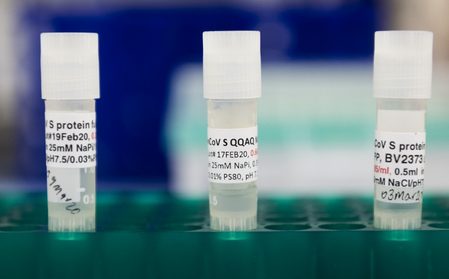SUMMARY
This is AI generated summarization, which may have errors. For context, always refer to the full article.
![[ANALYSIS] The challenges of deploying a COVID-19 vaccine in the PH](https://www.rappler.com/tachyon/2020/11/tl-ph-vaccine-challenges.jpg)
A few days ago, Pfizer released interim results for its COVID-19 vaccine phase 3 clinical trial involving more than 45,000 participants. The numbers suggest that the vaccine is 90% effective at protecting individuals from the virus and would be comparable to common vaccines we use today like the measles vaccine. This is an exciting development in our race to end the pandemic and reopen the world.
However, it is important to put the Pfizer vaccine story into context to better understand the challenges we face in the Philippines. Pfizer has announced that it will be able to manufacture up to 1.3 billion doses by the end of 2021. The United States has already placed an initial order of 100 million doses with an open option to acquire up to 500 million additional doses. The European Union has ordered 300 million doses. Likewise, other developed and resource-rich countries have already secured most of the remaining numbers of doses of the original production capacity. It is unlikely that the Philippines will be receiving the 220 million doses that we would need to vaccinate all of the 110 million Filipinos anytime soon.
One further challenge is that this mRNA vaccine requires super cold technology in order to store and to transport doses at -80°C, which is significantly colder than most regular freezers. Is the country going to be ready to store and to ship this vaccine to distribute it among our 7,600 islands, especially since each Filipino will have to be given two doses separated by a month?
Nonetheless, it is likely that we will begin to receive limited quantities of vaccine in the next 6 months. This may include the Pfizer vaccine but other promising vaccines should also be part of the package. The COVAX facility co-sponsored by the WHO and CEPI has guaranteed that the Philippines will initially receive enough doses to vaccinate 3% of our population. That is just 3.5 million Filipinos, equivalent to the population of just Quezon City.
Who will receive this first batch of vaccines? This is both a scientific and ethical question. Scientific because vaccines should be deployed to maximize their impact on minimizing transmission spread, and ethical because vaccines should be given first to those who are in most need.
Scientifically, we have to model the impact of vaccination on pandemic spread. My colleagues and I at UST are modeling different vaccine strategies to identify the most efficient distribution of limited doses to mitigate the pandemic in the country. Which regions should be vaccinated first? Which LGUs should get priority? My initial intuition is that our vaccination strategy should prioritize the NCR since the NCR is the engine that is driving the pandemic in the rest of the country. If we can neutralize the pandemic in Metro Manila by building herd immunity among its 13 million residents then we can strangle the local pandemics in the provinces by severing the lifeblood of the virus.
Ethically, there is general agreement that medical frontliners should be vaccinated first. They are at highest risk for becoming sick because they are caring for COVID-19 patients. Next, I propose that senior citizens should be vaccinated because they are at highest risk of severe COVID-19. Since our lolos and lolas often live in multigenerational homes – 60% of all Filipino households are multigenerational – shielding them would allow their children and their grandchildren to be able to more freely move around in society. This would not only protect our seniors but would also be beneficial for the economy. After our senior citizens, we should then vaccinate other non-medical frontliners like teachers and supermarket workers since they too are at risk because their job involves mixing with many people. Finally, the rest of the population would be vaccinated. It would be a tragic scientific and moral disaster if the rich and the powerful are vaccinated first simply because of their money and influence.
The success of the Pfizer vaccine is a hopeful sign that the end of the pandemic is in sight. There are other vaccines on the way. However, a successful vaccination program in the Philippines will take many months if not years to complete. And it will probably not begin until the middle to end of next year.
For now, despite the excitement generated by these vaccines, we must remain vigilant because the virus is still with us. As we are witnessing in many European countries and in the United States, the possibility of another wave of viral infections here in the Philippines is still very real. Even now, we are already seeing an uptick in daily COVID-19 cases in the country, which we hope will be contained.
To ensure our safety, as citizens, we must maintain minimum health standards and comply with physical distancing and mask wearing requirements. As a country, we must deploy our contact tracing, isolation, and quarantine, and targeted lockdown strategies to limit viral transmission and contain super spreader events.
Only this way will we be able to enjoy the Christmas and holiday season that is quickly approaching. – Rappler.com
Reverend Fr. Nicanor Austriaco is Visiting Professor of Biological Sciences at the University of Santo Tomas, and an OCTA Research Fellow.
Add a comment
How does this make you feel?

There are no comments yet. Add your comment to start the conversation.